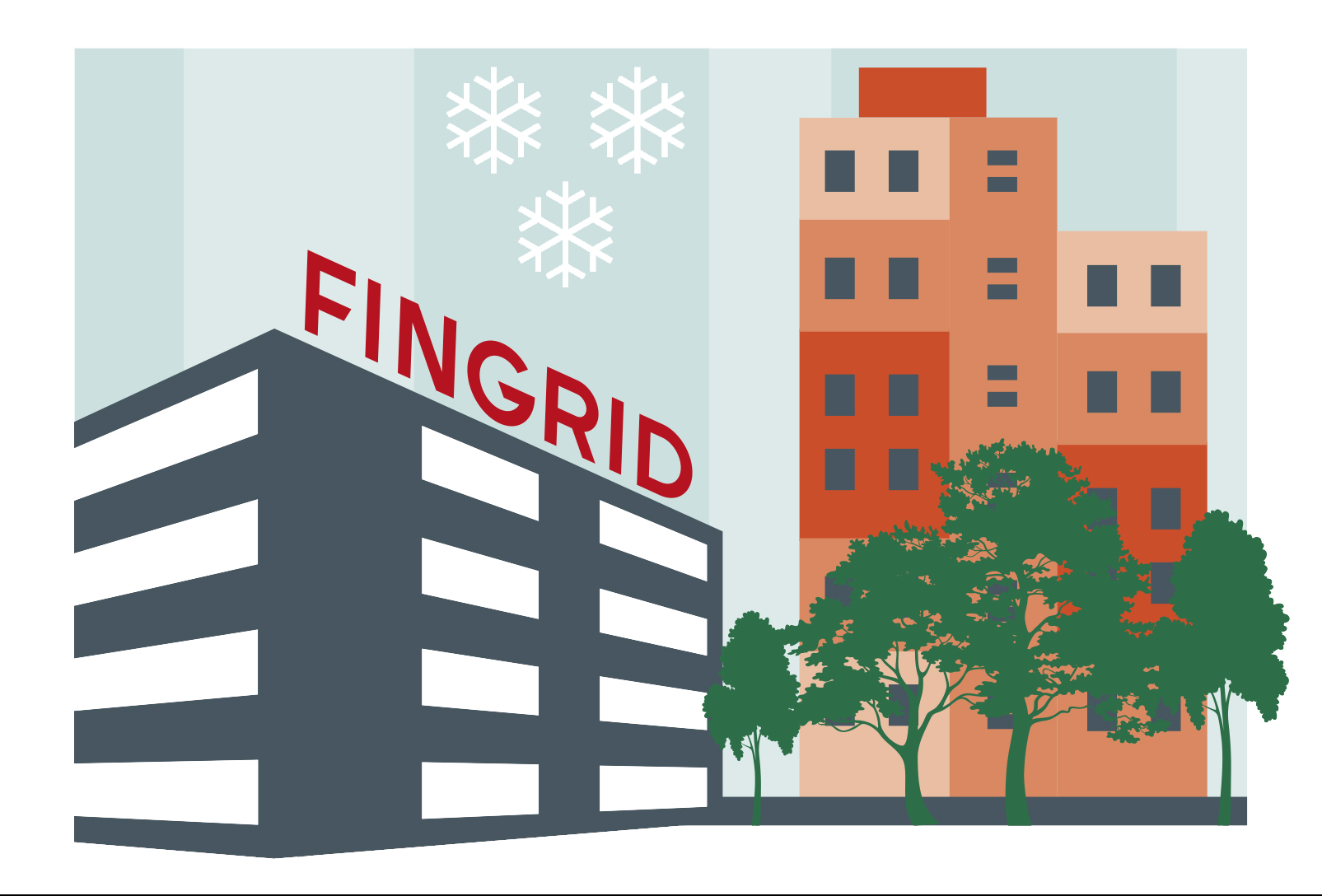Balancing
One of Fingrid’s central tasks is electricity balancing, which means maintaining the balance between production and consumption. The more we use weather-dependent energy sources, such as solar and wind power, the larger the fluctuations in production. Consumption is changing slowly all the time. On the other hand, a disturbance in production can cause large deviations. Acquiring reserve capacity in advance safeguards the supply of electricity in, for example, disturbance situations. Electricity outages caused by the transmission grid are extremely rare.
Fast and slow changes
Electricity balancing requires different reserves for different changes: fast and slow. For example, a large power plant that disconnects from the grid produces a corresponding shortage. In that case, the replacement production or reduction in consumption must be obtained quickly. The first automatic replacement systems react in seconds, after which slower reserves can be manually activated in about 15 minutes.
The names of reserve products are standardised in Europe: FCR-N (Frequency Containment Reserve for Normal Operation), strives to maintain the frequency in the normal range of 49.9 to 50.1 Hz. The aim of FCR-D (Frequency Containment Reserve for Disturbances) is to maintain the frequency no lower than at 49.5 Hz when the frequency falls below the normal frequency range. Both of these are automatic control systems based on frequency measurement.
Upward regulation is needed when production is smaller than consumption, which means production deficit. In this case, the production at a power plant is increased or consumption is decreased.
Downward regulation is needed when too much electricity has been produced in relation to consumption. When this happens, production is reduced or consumption increased.
Parties in the reserve markets
Some of the operators are major consumers, such as large industrial plants. Adjusting manufacturing process can decrease or increase electricity consumption. This kind of balancing-related regulation takes place all the time. Today, a lot of greenhouses are also involved in reserve markets. When an electricity shortage occurs, the lighting in greenhouses is reduced quickly.
Weather-dependent energy sources, such as wind and solar power, cannot produce more than what the weather allows. As a result, they are used for downward regulation but not for upwardregulation . However, hydropower plays an important role in the balancing power market because it can be adjusted effectively. The only time that rivers have to flow at full force through the power plant is during floods.
Price development for reserve electricity
A major change in the development of reserve prices occurred in 2010, when the change was made to market-based reserve procurement. The price of reserve electricity increased clearly at that time, but as more parties gradually entered the market, competition lowered the price of reserves.
In the future, the trend will be toward decentralised small-scale production as various companies and even consumers can take part in electricity production. Renewable energy sources will bring more variation to production amounts. If electric cars become more common, their typical charging times will affect consumption behavoiur. When changes become more difficult to forecast, we will need more reserve products that can react to changes automatically and quickly. •
Expert: Development Manager Jyrki Uusitalo





